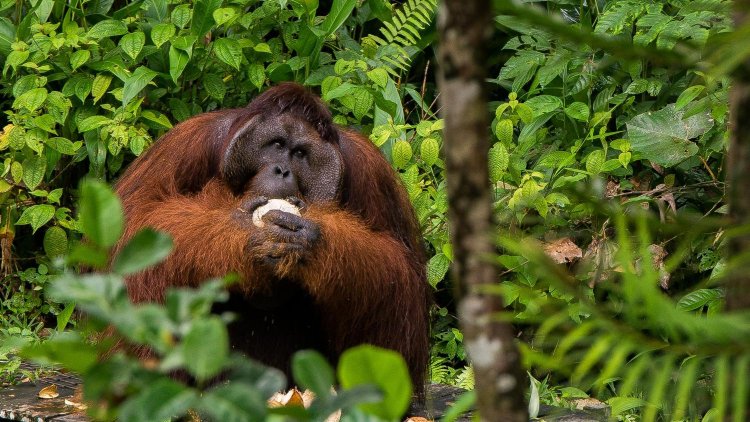Jungle Jewels: Unveiling the Hidden Treasures of Borneo's Wildlife Sanctuaries
Borneo, the third-largest island in the world, is a realm where nature's wonders thrive amidst lush rainforests and rugged landscapes. Home to an incredible array of wildlife and unique ecosystems, this Malaysian territory offers some of the most captivating wildlife sanctuaries on the planet. From the enigmatic orangutans of Sabah to the secretive clouded leopards of Sarawak, Borneo’s wildlife sanctuaries provide a glimpse into the rich biodiversity that characterizes this tropical paradise. This article delves into the hidden gems of Borneo's wildlife sanctuaries, exploring the pristine habitats, conservation efforts, and unforgettable experiences awaiting those who venture into this natural wonderland.

Kinabatangan Wildlife Sanctuary: Riverine Riches and Rainforest Wonders
Nestled in the heart of Sabah, the Kinabatangan Wildlife Sanctuary is a sprawling 26,000-hectare reserve that represents one of the most biodiverse areas in Southeast Asia. The sanctuary, anchored by the Kinabatangan River, is a haven for wildlife enthusiasts and researchers alike, offering unparalleled opportunities for wildlife observation and ecotourism.
Diverse Ecosystems and Rich Biodiversity
The Kinabatangan Wildlife Sanctuary encompasses a variety of ecosystems, including riverine forests, mangroves, and lowland rainforests. This diversity creates a mosaic of habitats that support a wide range of species. Visitors can expect to encounter more than 200 bird species, including the rare and elusive Bornean Pygmy Kingfisher and the charismatic Rhinoceros Hornbill. The sanctuary is also home to an array of mammals, such as the Proboscis Monkey, known for its distinctive nose, and the endangered Bornean Orangutan, which can be spotted swinging through the trees.
River Cruises and Wildlife Spotting
One of the best ways to experience the Kinabatangan Sanctuary is through a river cruise along the Kinabatangan River. These boat tours offer a unique vantage point to observe wildlife in their natural habitat. As you glide through the serene waters, keep an eye out for sightings of Long-tailed Macaques, Bornean gibbons, and the occasional pygmy elephant, which is known to inhabit the area. The river’s winding channels and seasonal floodplains provide excellent opportunities for spotting wildlife, especially during the early morning and late afternoon when animals are most active.
Conservation Efforts and Community Involvement
Conservation in the Kinabatangan Wildlife Sanctuary is a collaborative effort involving local communities, NGOs, and government agencies. The sanctuary faces challenges from deforestation and habitat fragmentation, but initiatives are in place to address these issues. Local communities are actively involved in conservation projects, and eco-tourism plays a crucial role in funding these efforts. Visitors are encouraged to support sustainable tourism practices, such as respecting wildlife and participating in guided tours led by knowledgeable local guides who emphasize the importance of conservation.
Mulu Caves and the Bornean Bat Symphony
In the northern part of Sarawak lies the Mulu Caves National Park, a UNESCO World Heritage Site renowned for its spectacular limestone karst formations and extensive cave systems. Beyond the caves, Mulu is celebrated for its rich biodiversity and unique wildlife experiences, particularly the dramatic bat exodus that takes place each evening.
The Enigmatic Mulu Caves
The Mulu Caves are a network of subterranean wonders that include some of the world’s largest and longest caves. The Deer Cave, for instance, holds the title for the world’s largest cave passage, while Clearwater Cave is one of the longest in Asia. These vast underground chambers are not only geological marvels but also crucial habitats for various species of bats and swiftlets. Visitors to the Mulu Caves can embark on guided tours that explore these awe-inspiring formations, often encountering rare species of cave-dwelling creatures along the way.
The Bat Exodus: A Natural Spectacle
One of the most remarkable wildlife phenomena in Mulu is the nightly bat exodus from the Deer Cave. As dusk approaches, millions of bats emerge from the cave in a mesmerizing cloud of flapping wings, creating a dramatic spectacle that draws spectators from around the world. This bat exodus is not only a visual feast but also an essential ecological event, as the bats play a crucial role in seed dispersal and insect control in the region.
Biodiversity Beyond the Caves
Outside the caves, Mulu National Park is home to a wealth of flora and fauna. The park’s diverse habitats, ranging from lowland rainforests to montane forests, support a variety of wildlife. Visitors can encounter species such as the rare Mulu Rock Rat and the elusive Bornean Clouded Leopard. Birdwatchers will also find delight in spotting endemic species like the Mulu Blue Flycatcher and the White-crowned Hornbill. The park offers a range of eco-tours and treks that allow visitors to explore its rich biodiversity while contributing to conservation efforts.
Danum Valley Conservation Area: The Last Great Rainforest
Situated in the eastern part of Sabah, the Danum Valley Conservation Area is a pristine expanse of tropical rainforest that represents one of the last remaining lowland rainforests in Borneo. Covering approximately 438,000 hectares, Danum Valley is a sanctuary for both wildlife and researchers, offering a rare opportunity to experience one of the world's most untouched rainforests.
Untouched Rainforest and Rare Wildlife
Danum Valley’s rainforest is a living laboratory, where researchers study the complex interactions between flora and fauna in a pristine environment. The area is renowned for its high biodiversity, including iconic species such as the Bornean Orangutan, the Sumatran Rhinoceros, and the Malayan Sun Bear. The dense forest canopy and diverse habitats provide crucial refuge for these and many other species, making Danum Valley a critical area for conservation.
Eco-Lodges and Research Stations
For those seeking an immersive rainforest experience, Danum Valley offers a range of eco-lodges and research stations that provide comfortable accommodations while minimizing environmental impact. These lodges often include guided tours led by experienced naturalists who share insights into the rainforest’s ecology and conservation efforts. Visitors can participate in activities such as canopy walks, night safaris, and river cruises, all of which offer unique perspectives on the rainforest’s rich biodiversity.
Conservation Challenges and Initiatives
Despite its protected status, Danum Valley faces ongoing challenges from illegal logging and encroachment. Conservation initiatives in the area focus on monitoring wildlife populations, protecting habitats, and engaging local communities in conservation efforts. Visitors are encouraged to support these initiatives by practicing responsible tourism and contributing to conservation programs that help safeguard this invaluable rainforest.
Sepilok Orangutan Rehabilitation Centre: Guardians of the Forest Giants
In the heart of Sabah, the Sepilok Orangutan Rehabilitation Centre stands as a beacon of hope for the endangered Bornean orangutan. Established in 1964, this sanctuary has become a leading institution in the conservation and rehabilitation of orangutans, offering a vital link between humans and these magnificent primates.
A Lifeline for Orphaned and Injured Orangutans
The Sepilok Orangutan Rehabilitation Centre was founded with the mission to rehabilitate orphaned and injured orangutans, preparing them for a return to the wild. The centre operates within a 43-square-kilometer forest reserve, providing a safe and natural environment for the orangutans to learn essential survival skills. The rehabilitation process includes the gradual reintroduction of these primates to their natural habitat, allowing them to develop the necessary skills to thrive in the wild.
Viewing the Orangutans: A Unique Experience
Visitors to the Sepilok Orangutan Rehabilitation Centre can witness the rehabilitation process up close, observing the orangutans during their feeding times and daily activities. The centre’s viewing platforms and observation areas offer excellent vantage points to see these incredible creatures in action. Educational programs and guided tours provide valuable insights into the orangutans' behavior, conservation challenges, and the centre’s efforts to protect their habitat.
Conservation Efforts and Community Involvement
The work of the Sepilok Orangutan Rehabilitation Centre extends beyond rehabilitation. The centre actively engages in research and conservation initiatives aimed at protecting orangutan populations and their habitats. Collaboration with local communities is a key component of these efforts, as raising awareness and promoting sustainable practices are crucial for the long-term survival of orangutans. Visitors can support these initiatives by participating in educational programs and contributing to conservation funding.
Tabin Wildlife Reserve: A Hidden Gem of Borneo
Located in eastern Sabah, the Tabin Wildlife Reserve is a 300,000-hectare protected area known for its rich biodiversity and pristine habitats. This reserve offers a unique opportunity to explore one of Borneo’s lesser-known but equally captivating wildlife sanctuaries.
Forest Trails and Wildlife Encounters
The Tabin Wildlife Reserve features a network of well-maintained trails that traverse a range of habitats, from lowland rainforests to hill forests. These trails provide access to some of the reserve’s most remarkable wildlife sightings. Visitors might encounter the endangered Bornean Pygmy Elephant, which roams the forest in small herds, or the elusive Bornean Clouded Leopard. The reserve is also home to a variety of bird species, including the rare White-crowned Hornbill and the Bornean Bristlehead.
Eco-Lodges and Sustainable Tourism
Tabin Wildlife Reserve offers a selection of eco-lodges that provide comfortable accommodations while prioritizing environmental sustainability. These lodges are designed to blend seamlessly with the natural surroundings and minimize ecological impact. Guided tours and night safaris are available, allowing visitors to experience the reserve’s nocturnal wildlife and learn about ongoing conservation efforts.
Conservation Challenges and Strategies
Despite its protected status, the Tabin Wildlife Reserve faces challenges such as habitat fragmentation and illegal hunting. Conservation strategies focus on habitat restoration, wildlife monitoring, and community engagement. By participating in eco-tourism and supporting conservation programs, visitors contribute to the protection of this vital rainforest and its inhabitants.
Bako National Park: Coastal Wonders and Unique Wildlife
Bako National Park, located in Sarawak, is renowned for its diverse ecosystems and stunning coastal scenery. Covering an area of approximately 27,000 hectares, the park is a treasure trove of wildlife and natural beauty.
Diverse Habitats and Wildlife
Bako National Park encompasses a range of habitats, including mangroves, dipterocarp forests, and sandy beaches. This variety of ecosystems supports a wealth of wildlife, including the distinctive Proboscis Monkey, which is known for its large nose and unique appearance. The park is also home to other primate species, such as the long-tailed macaque and the silvered leaf monkey, as well as a diverse array of bird species and reptiles.
Trails and Scenic Views
The park offers a network of well-marked trails that lead to some of its most scenic spots. Trails such as the Lintang Trail and the Telok Pandan Kecil Trail offer breathtaking views of the park’s coastline and rainforest. These trails provide opportunities for wildlife spotting and exploration, with guided tours available to enhance the experience and provide insights into the park’s ecology and conservation efforts.
Conservation and Sustainable Tourism
Bako National Park is managed by the Sarawak Forestry Corporation, which is dedicated to conserving the park’s natural resources and wildlife. Conservation efforts include habitat protection, wildlife monitoring, and educational programs aimed at raising awareness about the park’s unique biodiversity. Visitors are encouraged to practice responsible tourism by following park regulations and supporting conservation initiatives.
The Lush Legacy of Borneo: A Call to Action
Borneo's wildlife sanctuaries are more than just destinations; they are vital conservation havens that protect some of the world's most endangered species and unique ecosystems. Each sanctuary, from the riverine wonders of Kinabatangan to the limestone marvels of Mulu and the primate havens of Sepilok, plays a crucial role in preserving Borneo's rich biodiversity.
As travelers, researchers, and nature enthusiasts, we have a responsibility to support these conservation efforts and promote sustainable tourism practices. By visiting these sanctuaries, respecting wildlife, and contributing to conservation programs, we help ensure that Borneo’s natural treasures continue to thrive for generations to come.
Disclaimer: The travel information and recommendations on this blog are intended for general guidance and inspiration. Conditions and regulations can change quickly, so please verify all details with appropriate sources before making travel plans. We are not liable for any errors, omissions, or outcomes resulting from your use of this information. Travel involves inherent risks, and it's essential to prioritize your safety and well-being. Always travel with adequate insurance and take necessary precautions.
What's Your Reaction?





















